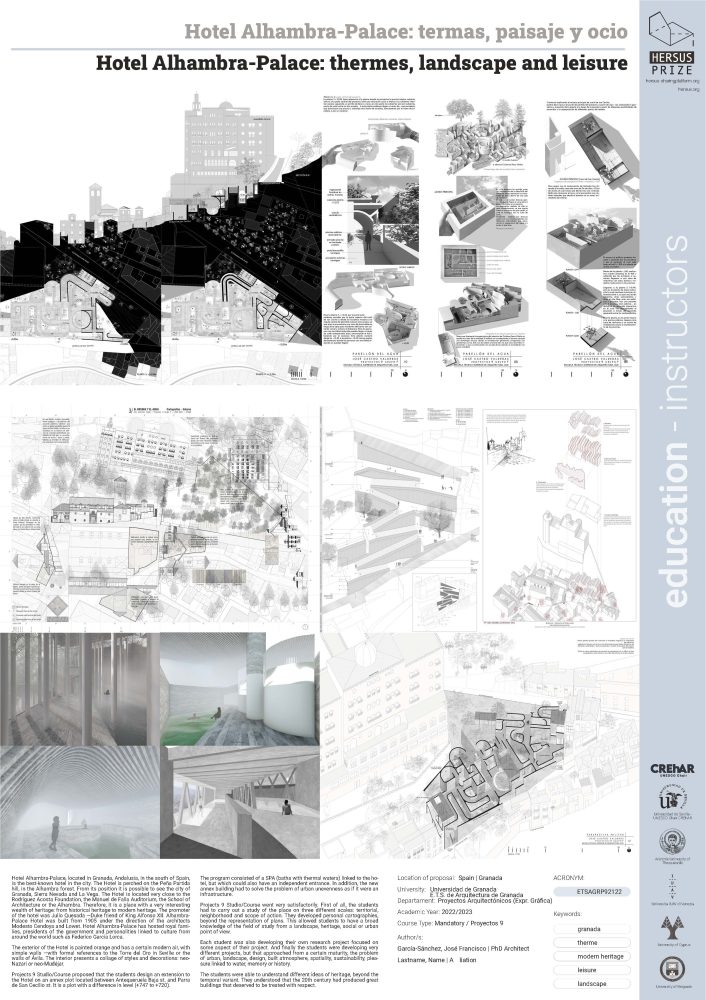Hotel Alhambra-Palace: thermes, landscape and leisure
Education - Instructors / Shortlisted

The Alhambra-Palace Hotel, located in Granada, Andalusia, in the south of Spain, is the best-known hotel in the city. The Hotel stands on the Peña Partida hill, inside the Alhambra forest, which overlook the city of Granada, Sierra Nevada and La Vega. The Hotel is close to the Rodríguez Acosta Foundation, the Manuel de Falla Auditorium, the School of Architecture or the Alhambra. That’s why it’s a very interesting wealth of heritage: from historical heritage to modern heritage. The promoter of the hotel was Julio Quesada —Duke friend of King Alfonso XII. Alhambra— Palace Hotel was built under the direction of the architects Modesto Cendoya and Lowet, from 1905. The Hotel Alhambra-Palace has hosted important personalities throughout the world-royal families, presidents of the government and personalities, or cultural figures as Federico García Lorca.
Hotel´s facade is orange painted at that makes look modern style, also for its white walls —similar formal reference to the Tower of Gold, in Seville, or The walls of Avila. The interior mixing styling and decoration —neo-Nazari or neo-Mudéjar— like a collage.
Projects 9 Course proposed as activity for students to design an extension of the Hotel on an annex plot, located between streets at different levels, Antequeruela Baja St. and Parra de San Cecilio St. (+747 to +720).
The building program will consisted of a SPA (thermal baths) internally linked to the hotel, with an “extra” independent entrance for the outside. Taking into consideration the urban unevenness, which must be solved by the new annex building, as if it were an infrastructure.
Projects 9 Course was successfully developed. In a first step, students had to carry a site survey on three different scales: territorial, neighborhood and scope of action, drawing, not only a standard plans, but designing his personal cartographies. This activity allowed them to have a broad knowledge research from a landscape, heritage, social or urban point of view.
In parallel to this activity, each student was developing a singular research, focused on aspect of their individual previous project. Resulting very different projects but with the common element of reached a degree of maturity in the aspects of the problem of urban, landscape, design, built atmosphere, spatiality, sustainability, pleasure linked to water, memory or history.
In conclusion, the students were able to understand different ideas of heritage, beyond the temporal variant. They understood that the 20th century had produced great buildings that deserved to be treated with respect.
Author: José Francisco García-Sánchez